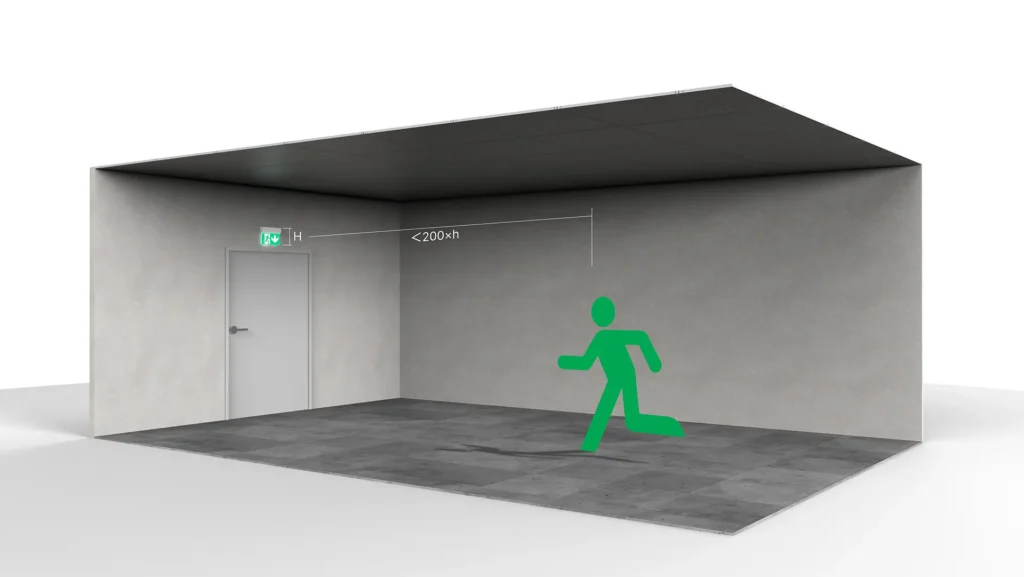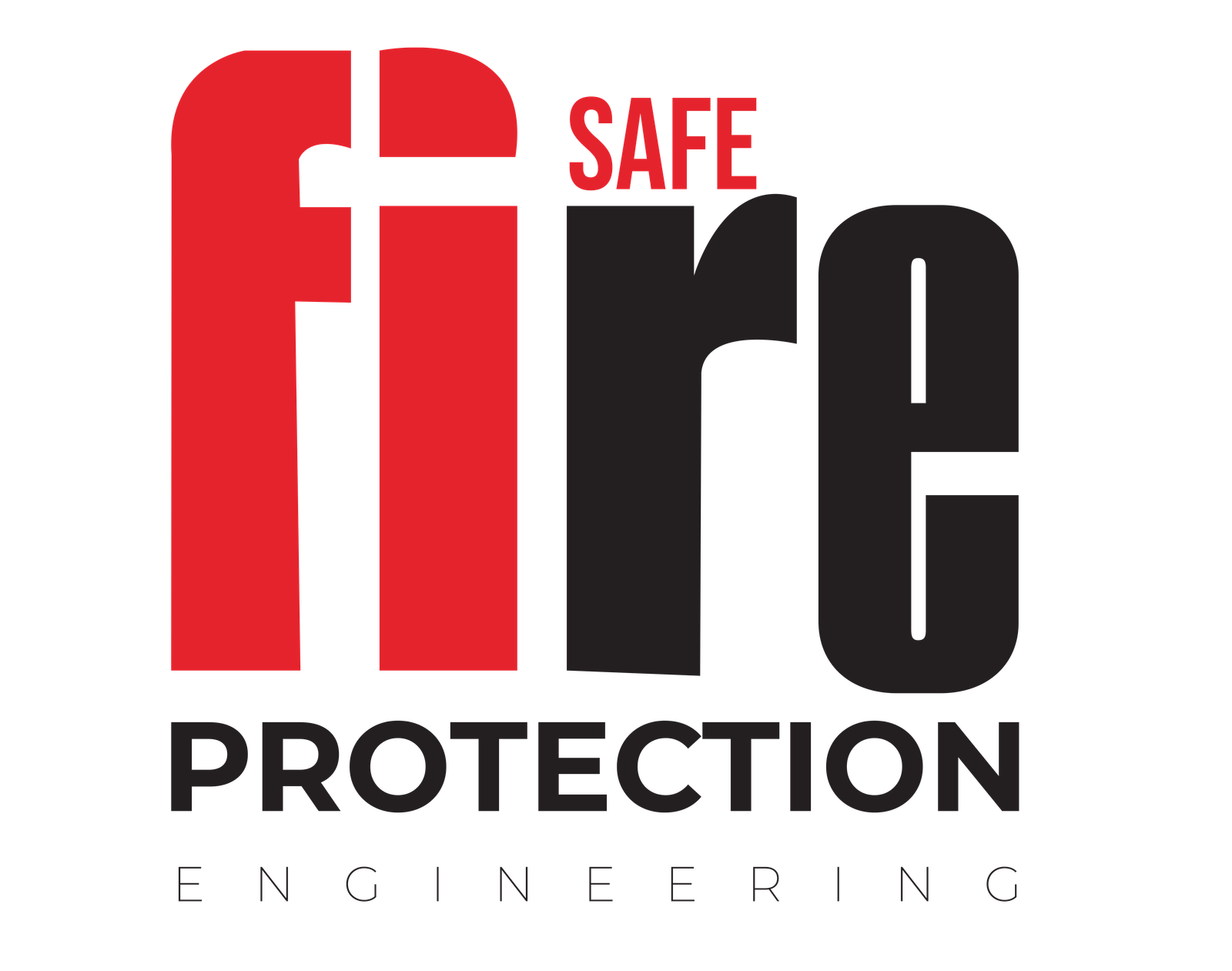What are emergency lights and exit signs, and why are they important in buildings?
Emergency lights and exit signs are essential safety devices installed in buildings to protect occupants during emergencies.
Emergency lights automatically switch on when the primary power supply fails, providing illumination that helps people navigate safely. Exit signs, on the other hand, clearly mark the routes leading to designated emergency exits, guiding occupants to safety.
Together, they ensure that people can evacuate quickly and without confusion, even in smoke-filled or dark environments. Their importance lies in reducing panic, preventing accidents, and ultimately saving lives during fires, natural disasters, or sudden blackouts.
Safe Fire Protection Engineering ensures these systems are properly installed to enhance building safety and compliance with fire codes.
How do emergency lights and exit signs improve safety during power outages?
Power outages, especially in large or crowded buildings, can cause confusion, panic, and accidents. Emergency lights provide backup illumination, making stairways, corridors, and exit routes visible. This reduces the risk of slips, trips, and falls in low-visibility conditions.
Exit signs remain lit, either through backup batteries or photoluminescent materials, ensuring that evacuation routes are always clear and recognizable. By maintaining visibility and direction, emergency lights and exit signs eliminate disorientation and allow safe and efficient evacuation.

What is the primary purpose of emergency lights and exit signs in a building?
The primary purpose of emergency lights and exit signs is to protect lives during emergencies. They ensure that:
- Occupants can quickly locate exits.
- Safe pathways remain visible even if the building loses power.
- People can evacuate in an orderly manner, avoiding stampedes or accidents.
In short, they provide reassurance, reduce panic, and give clear guidance when every second matters.
Safe Fire Protection Engineering integrates these systems into fire protection strategies to maximize safety.
How do emergency lights function during a power outage?
Emergency lights are designed with backup power sources, most commonly rechargeable batteries or a centralized battery system. Under normal conditions, they remain off or operate in standby mode, charging the batteries. The moment a power failure occurs, a built-in relay activates the lights automatically. The illumination typically lasts between 90 minutes to 3 hours, depending on the system and regulations. This ensures there is enough time for safe evacuation and for emergency responders to access the building if needed.
What are the common types of emergency lighting systems used in fire protection?
Emergency lighting systems come in different types to meet varying building needs:
- Self-Contained Units (Standalone Lights):
- Each light has its own battery.
- Easy to install and maintain.
- Common in small to medium-sized buildings.
- Central Battery Systems:
- A single battery bank powers multiple lights.
- More complex and costlier, but easier to maintain in large facilities.
- Maintained Emergency Lights:
- Function as regular lights but stay on even during power cuts.
- Common in public spaces such as theaters and malls.
- Non-Maintained Emergency Lights:
- Remain off under normal conditions.
- Only switch on when the power fails.
- Often used in offices and warehouses.
These systems are critical in fire protection, as they maintain visibility when smoke and darkness could otherwise trap people inside.

What are the common types of exit signs used in commercial buildings?
Exit signs vary in design and power source, but their purpose remains the same: to guide occupants to safety. Common types include:
- LED Exit Signs:
- Energy-efficient and long-lasting.
- Available in single- or double-sided models.
- Photoluminescent Exit Signs:
- Glow in the dark after absorbing ambient light.
- Do not require electricity or batteries.
- Low-maintenance and eco-friendly.
- Electrically Powered Exit Signs with Battery Backup:
- Stay illuminated at all times using electricity.
- Switch to battery power during outages.
- Combination Exit Sign and Emergency Light Units:
- Exit sign with built-in emergency lighting.
- Saves space and ensures dual functionality.
Each type is chosen based on building codes, design preferences, and maintenance considerations. Safe Fire Protection Engineering supplies and installs all major types, ensuring compliance and reliability.
What safety regulations and codes govern the installation of emergency lights and exit signs?
Emergency lights and exit signs are legally mandated in most jurisdictions, and their installation is guided by internationally recognized safety standards. In the United States, the National Fire Protection Association (NFPA) 101 – Life Safety Code and NFPA 70 – National Electrical Code (NEC) outline the requirements for emergency lighting and exit signage. Additionally, the Occupational Safety and Health Administration (OSHA) sets workplace regulations for safe egress pathways.
Globally, many countries adopt variations of these codes or follow the International Building Code (IBC) and International Fire Code (IFC). These standards specify requirements for illumination levels, backup power duration, placement of exit signs, and inspection procedures. For instance, exit signs must be positioned at all exit doors, stairways, and directional points where the exit path might not be immediately obvious. By enforcing these codes, regulatory bodies ensure that all buildings provide clear and reliable evacuation routes for occupants during emergencies.

How often should emergency lights and exit signs be inspected and tested?
Routine inspection and testing are crucial to ensure that emergency exit lights and signs function properly when needed. According to NFPA 101 and OSHA requirements:
- Monthly Test: Emergency lights should be tested for at least 30 seconds every month to confirm that the battery and lamps operate correctly.
- Annual Test: A full 90-minute test is required once a year to ensure that the lights remain illuminated for the required duration during a simulated power outage.
- Visual Inspections: Exit signs should be checked regularly to verify that they are illuminated, visible, and free of obstruction.
In addition, records of testing and maintenance should be kept for inspection by authorities. Regular testing not only ensures compliance but also prevents equipment failures that could endanger lives during an actual emergency. Safe Fire Protection Engineering provides routine inspection and maintenance services for maximum safety compliance.
How long should emergency lights remain illuminated during a power failure?
The minimum required illumination time for emergency lights during a power outage is typically 90 minutes. This standard is outlined in NFPA 101, OSHA, and IBC regulations. Ninety minutes is considered sufficient for occupants to safely evacuate even large or complex buildings and for first responders to conduct initial rescue operations.
In some high-risk facilities such as hospitals, airports, and industrial plants, emergency lighting systems may be designed to provide illumination for two to three hours or longer, depending on local regulations and building needs. The duration is achieved through high-capacity batteries, central battery systems, or emergency generators. Ensuring the proper duration of illumination is a critical factor in effective evacuation planning.
What materials and lighting technologies are commonly used in exit signs?
Exit signs are designed to remain visible in all conditions, which is why they use durable materials and advanced lighting technologies. Commonly used materials and technologies include:
- LED (Light Emitting Diode):
- The most popular choice today is due to high energy efficiency, long life span, and low maintenance.
- LEDs consume very little power, making them ideal for 24/7 operation.
- Photoluminescent Materials:
- Glow-in-the-dark exit signs that absorb ambient light and remain visible during outages.
- Eco-friendly, requiring no electricity or batteries.
- Electroluminescent Technology:
- Produces thin, uniform illumination.
- Used in modern, sleek exit sign designs.
- Acrylic or Polycarbonate Housing:
- Durable materials resistant to impact, fire, and tampering.
- Commonly used in high-traffic or industrial environments.
- Aluminum Frames:
- Lightweight yet strong, often used in commercial settings for long-lasting durability.
The combination of these materials and technologies ensures that exit signs remain visible, reliable, and compliant with safety codes. Safe Fire Protection Engineering selects the best materials to ensure reliability and compliance.
What role do emergency lights play in fire protection and life safety systems?
Emergency lights are a critical component of a building’s fire protection and life safety strategy. Their primary role is to provide continuous illumination during fire incidents, power outages, or other emergencies where normal lighting fails. Specifically, they:
- Maintain Visibility: Help occupants see pathways, obstacles, and hazards when smoke or darkness reduces visibility.
- Guide Evacuation: Work hand-in-hand with exit signs to ensure people can find and reach exits quickly.
- Support First Responders: Provide firefighters and rescue teams with the visibility needed to access and secure the building.
- Prevent Panic: Reduce confusion and chaos during emergencies by keeping spaces illuminated.
Without emergency lighting, even well-trained occupants could become disoriented in smoke-filled or dark environments, leading to delays in evacuation. This makes them indispensable in safeguarding lives.
Conclusion
Emergency lights and exit signs are not just regulatory requirements—they are vital life safety tools that ensure safe evacuation during power outages, fires, and other emergencies. By providing clear illumination and directional guidance, they minimize confusion, prevent accidents, and save lives when seconds matter most.
At Safe Fire Protection Engineering, we understand the critical role these systems play in building safety. That’s why we are committed to delivering reliable, code-compliant, and cost-effective emergency lighting and exit sign solutions for commercial, industrial, and residential facilities. With proper design, installation, and routine maintenance, we help ensure that your building remains safe, compliant, and prepared for any emergency.
Your safety is our priority—because when an emergency strikes, every light and every sign matters.

